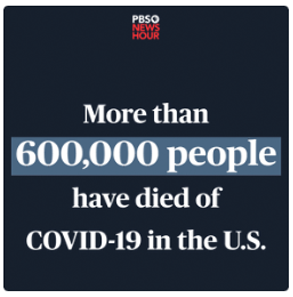Radar on Drug Benefits
-
Senators Pull Few Punches at PBM Execs During Insulin-Cost Hearing
During a May 10 hearing held by a key Senate committee — one day before that same committee advanced a PBM reform bill — politicians laid blame at the feet of both PBMs and drugmakers for the fact that high out-of-pocket costs for insulin and other medications have kept many Americans from accessing lifesaving therapies. But it was PBMs that received the sharpest criticism — including some memorable comments from Sen. Markwayne Mullin (R-Okla.).
“I kind of feel like hell’s freezing over because Chairman [Bernie] Sanders and I actually agree on something, and it’s that something needs to be done with PBMs,” Mullin said during the Senate Health, Education, Labor and Pensions (HELP) Committee hearing titled “The Need to Make Insulin Affordable for All Americans.”

-
PBM Probes Loom Large in Cigna, CVS, UnitedHealth 1Q Earnings Calls
During their first-quarter earnings calls in recent weeks, top executives at the companies that own the three largest PBMs in the U.S. discussed the regulatory challenges and inquiries facing the industry. They also defended the PBMs’ business practices, claiming they play a major role in negotiating drug prices on behalf of their clients. And they noted they have retained nearly all of their customers and added new ones despite the increased industry scrutiny.
Elected officials have targeted CVS Health Corp.-owned Caremark, The Cigna Group’s Express Scripts and UnitedHealth Group’s Optum Rx, accusing them of contributing to the high price of medications and for their lack of transparency. Those three PBMs have about an 80% market share, a consolidation of power that has garnered criticism from state and federal policymakers.

-
PBMs Can Do Little to Prevent, Mitigate Drug Shortages, Experts Say
Drug shortages have grabbed headlines in recent months, with patients struggling to fill prescription medications that treat conditions including asthma and attention-deficit/hyperactivity disorder (ADHD), and providers struggling to stock and administer specialty drugs, especially in oncology. Experts tell AIS Health, a division of MMIT, that PBMs don’t have an abundance of options to ameliorate the shortages and may be unlikely to try the limited workarounds that they do have.
New research prepared for the American Society of Health-System Pharmacists (ASHP) by researchers from the University of Utah found that 301 drug shortages were in effect by the end of the first quarter of the year — a five-year high.

-
As Copay Accumulators Proliferate, So Do Efforts to Ban Them
In February 2023, the Help Ensure Lower Patient (HELP) Copays Act (H.R. 830), bipartisan federal legislation that would prohibit the use of copay accumulator programs, was reintroduced to Congress. The bill would require health plans and PBMs to count the value of copay assistance that patients receive toward their cost-sharing requirements, and it would apply to individual, small-group and employer-sponsored health plans.
Copay accumulators work by preventing any monetary assistance that pharmaceutical companies offer commercially insured patients from counting toward their deductible or out-of-pocket maximum. Another common practice, copay maximizers, takes the total amount of a manufacturer’s copay offset program and divides it by 12, making that amount the new monthly copayment on any given drug over the course of a year.

-
GSK’s RSV Vaccine Prospects in Youngest Pediatric Patients Looks Unlikely, per FDA Label
GlaxoSmithKline Pharmaceuticals Ltd. won the first US approval for a respiratory syncytial virus vaccine on May 3 in older adults but looks like it may not be able to claim the same crown in the other key population impacted by the virus — infants and young children.
The Food and Drug Administration approval letter for GSK’s Arexvy says the agency is waiving the pediatric study requirement for children ages 0 to 2 “because there is evidence strongly suggesting that the biological product would be unsafe in this pediatric group.”
The label for Arexvy, which is indicated for adults 60 and older, says “evidence from an animal model strongly suggests that Arexvy would be unsafe in individuals younger than 2 years of age because of increased risk of enhanced respiratory disease.”












